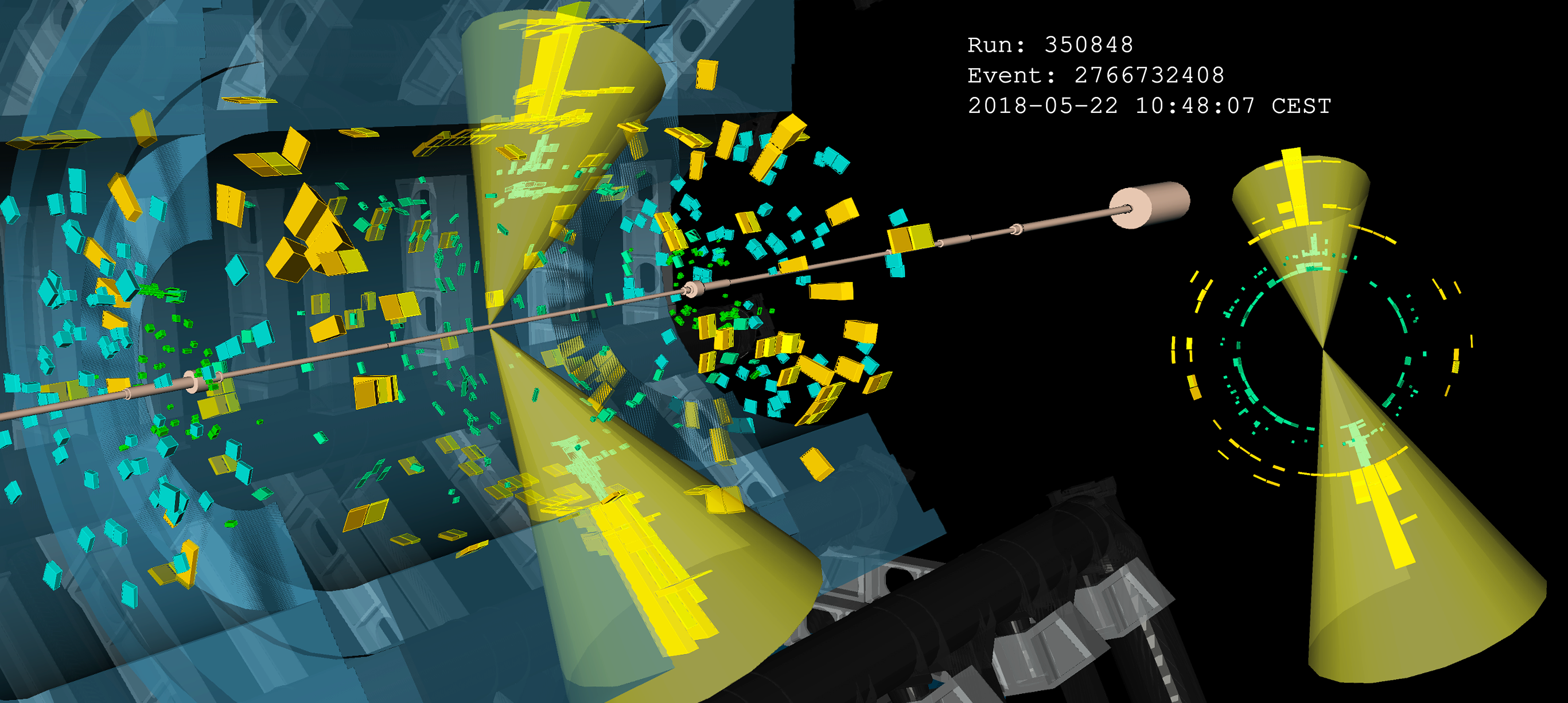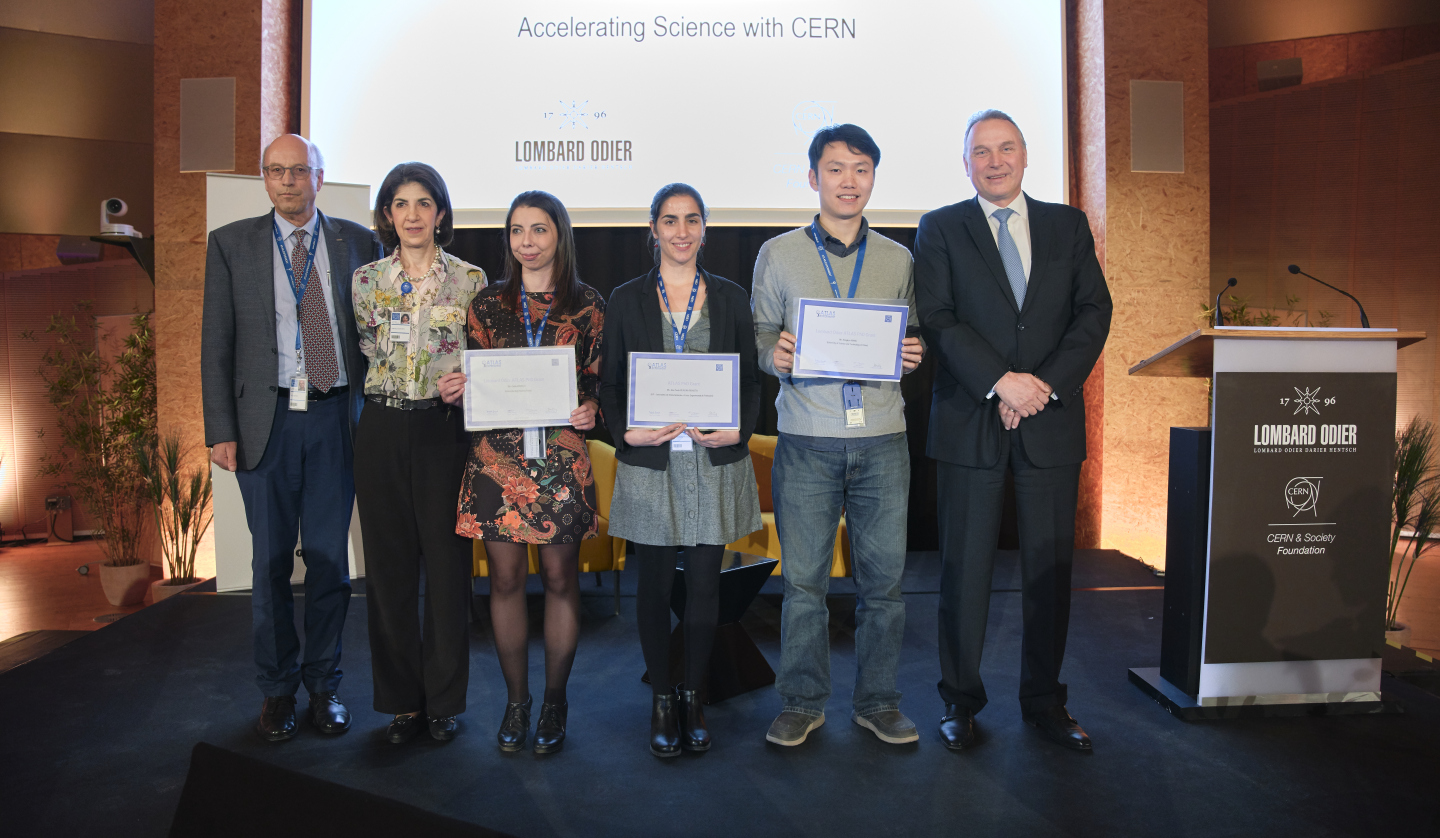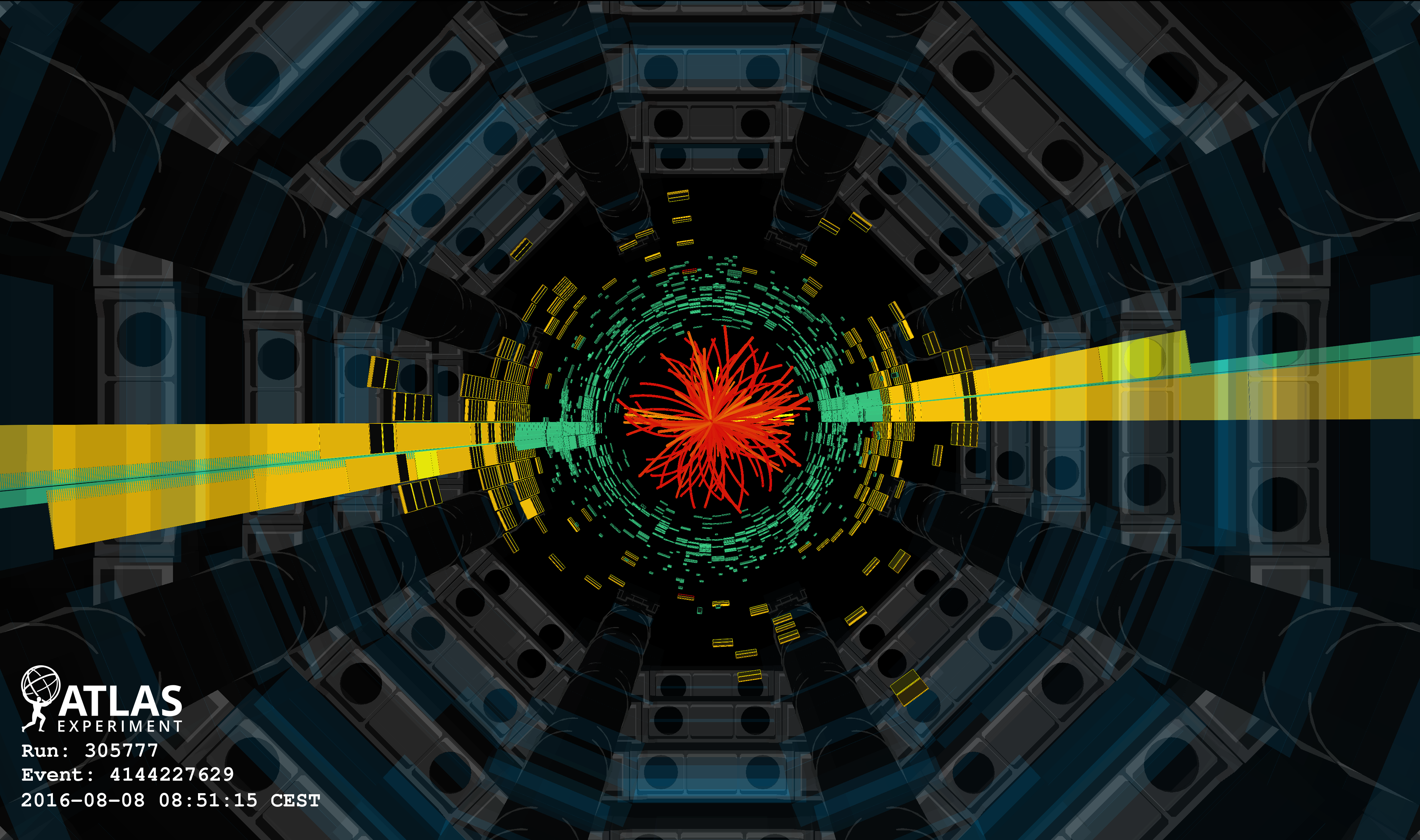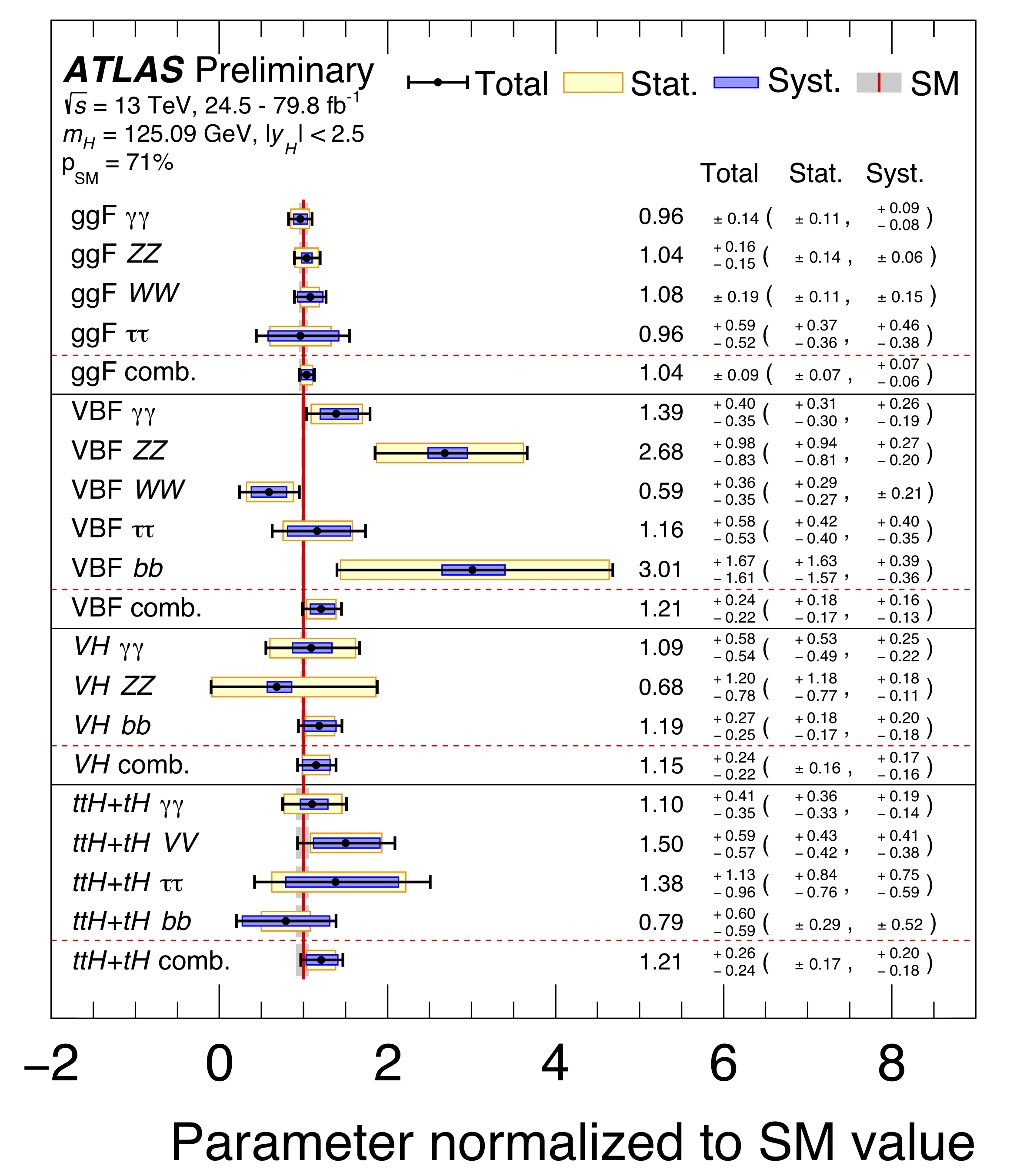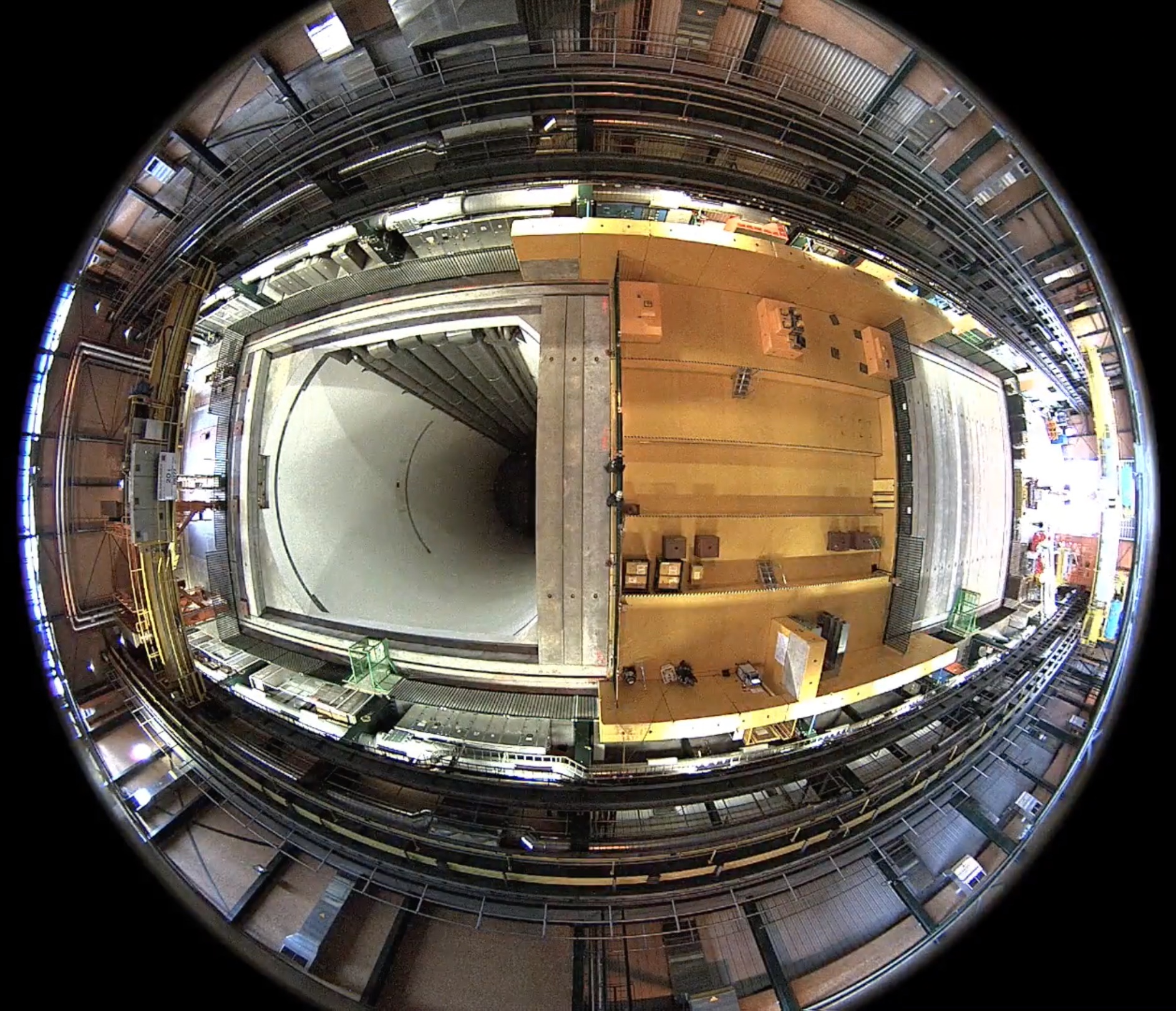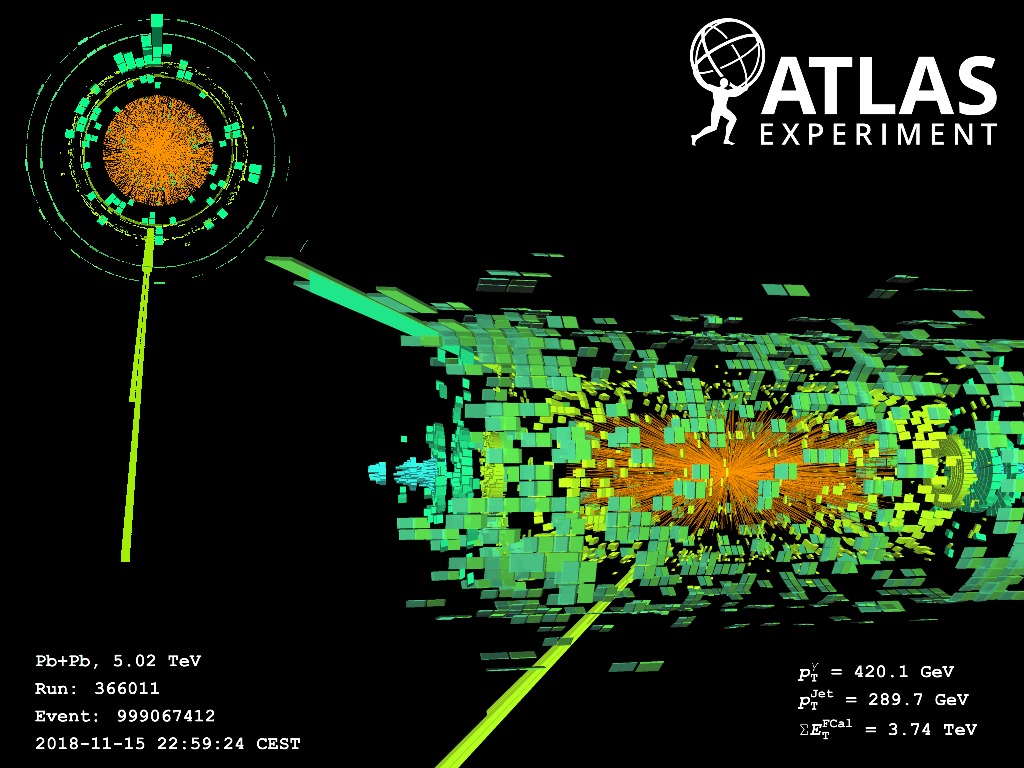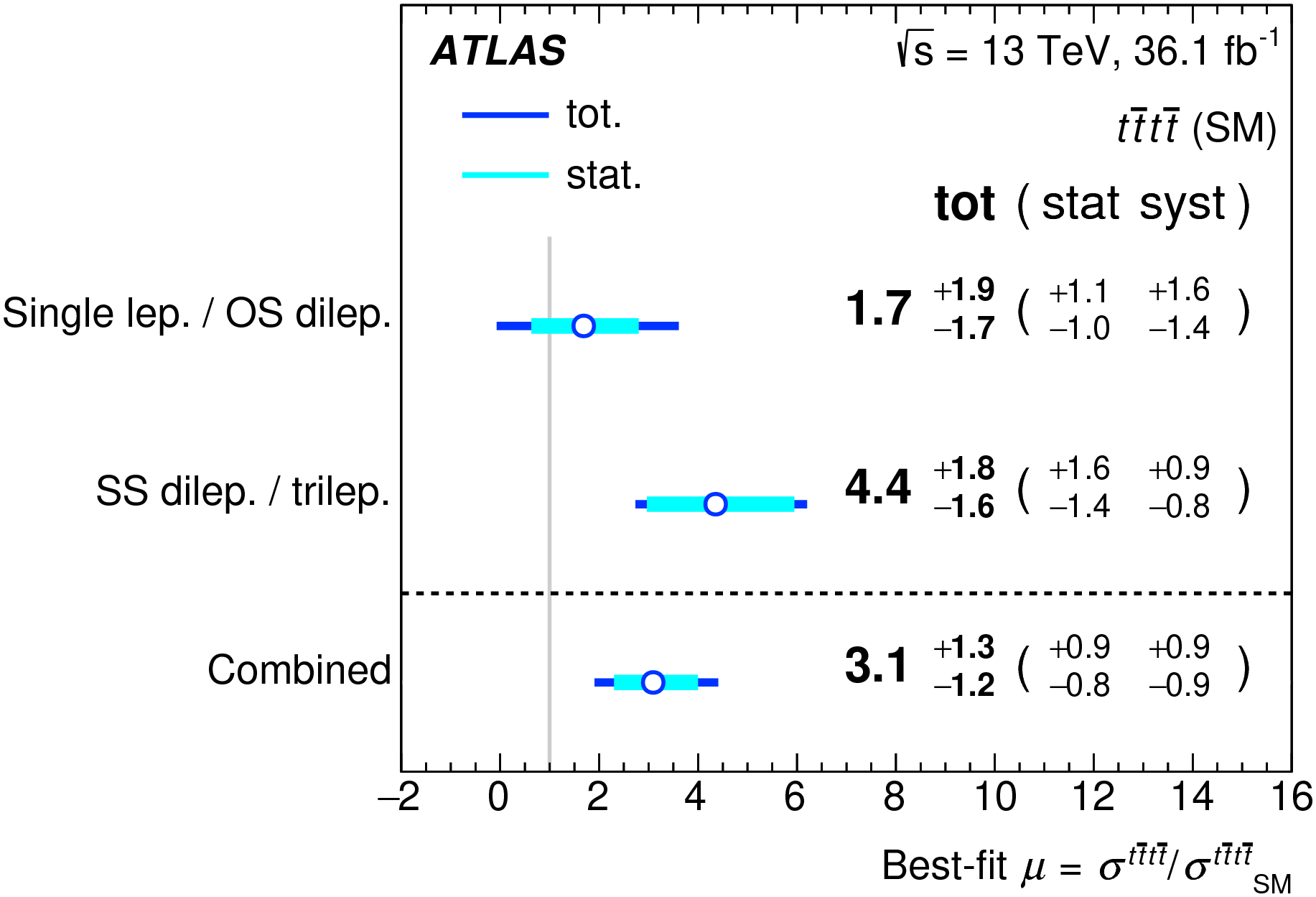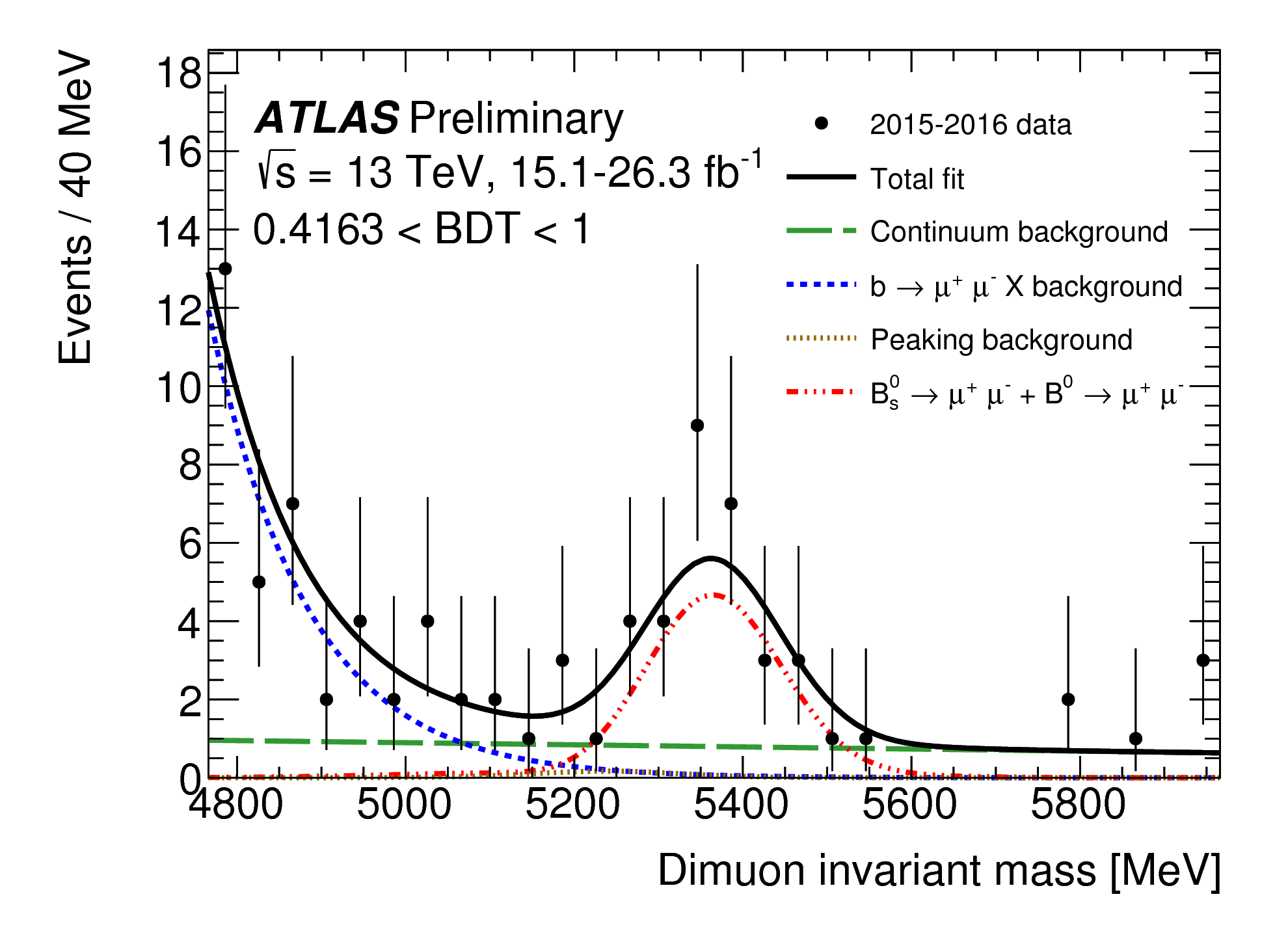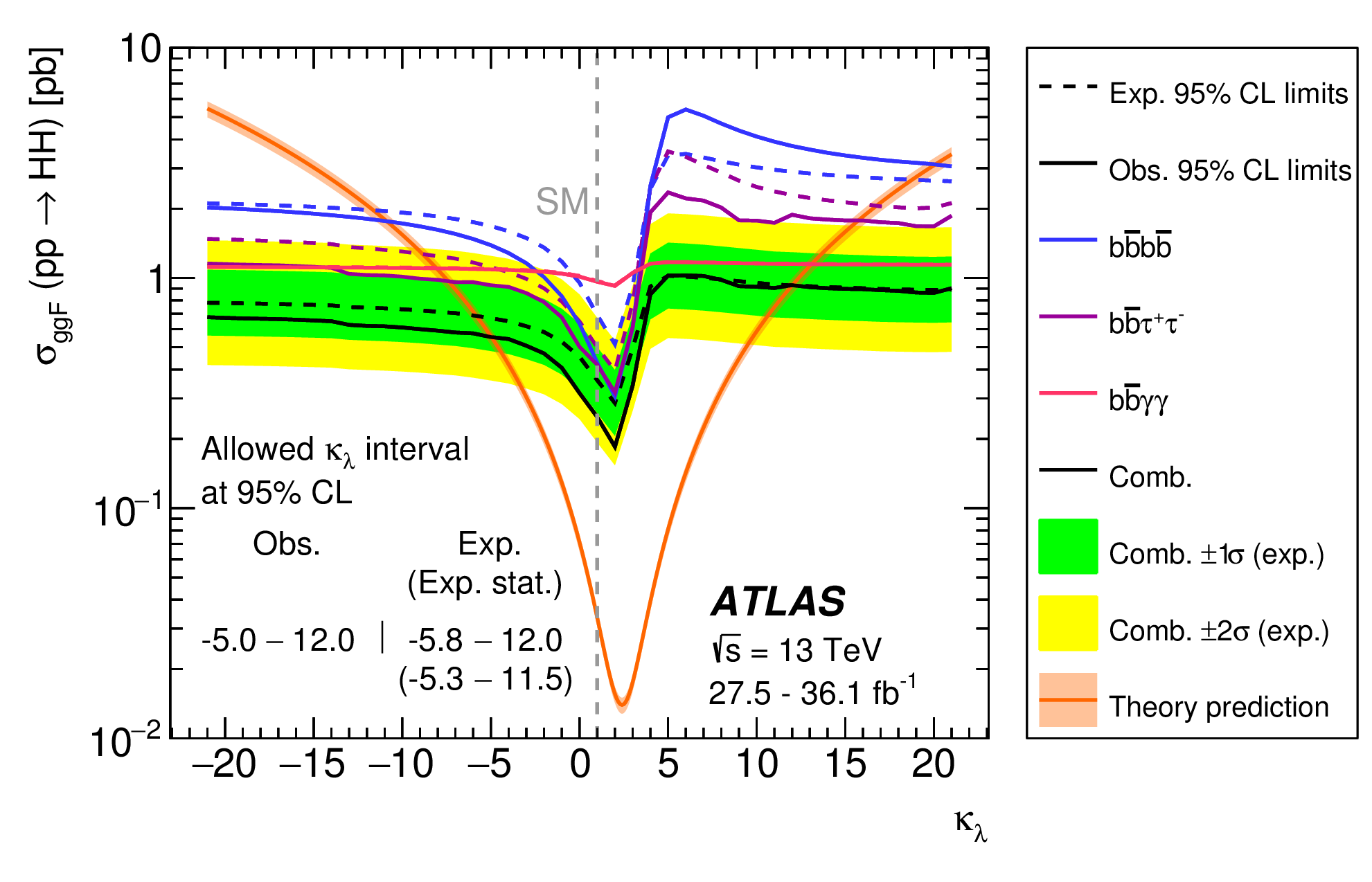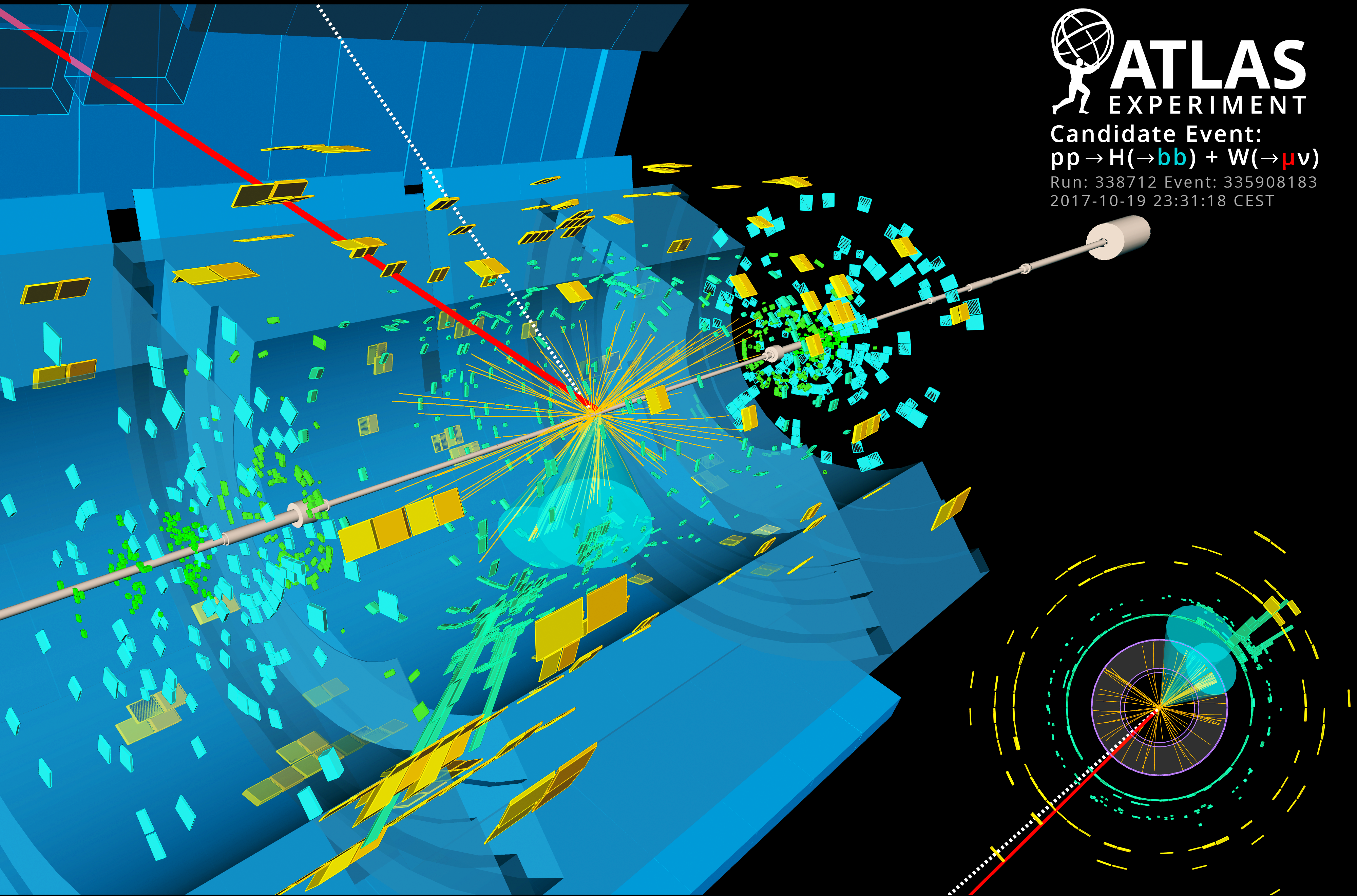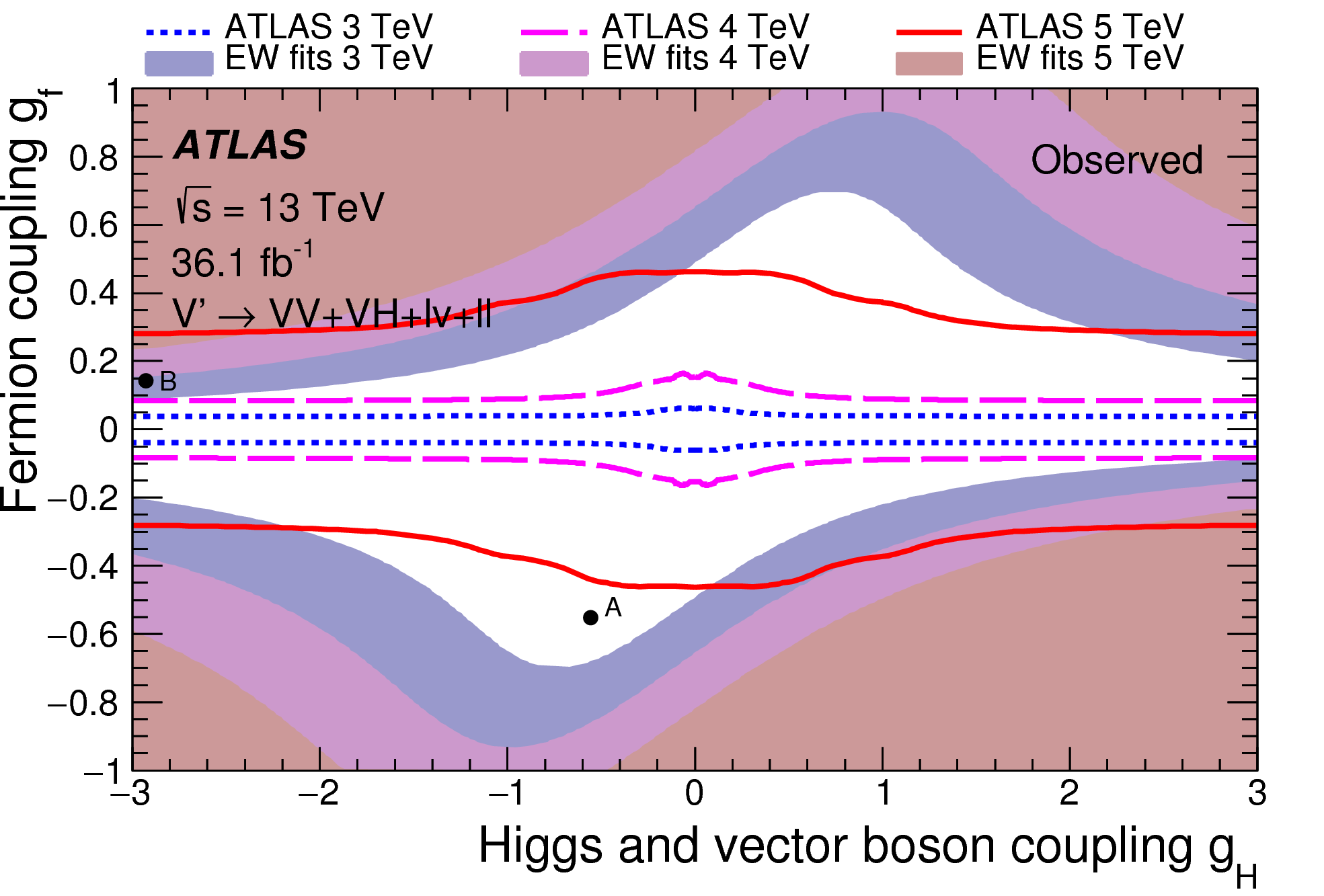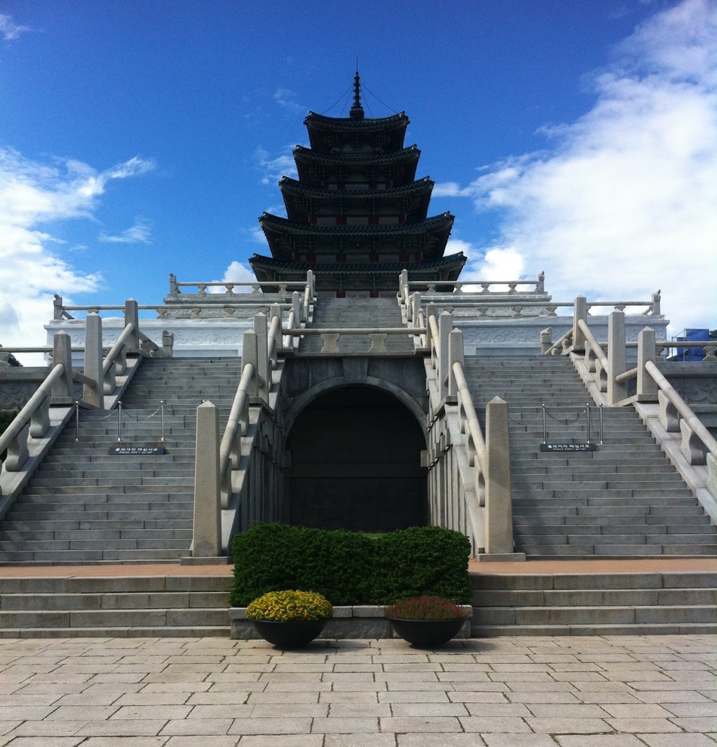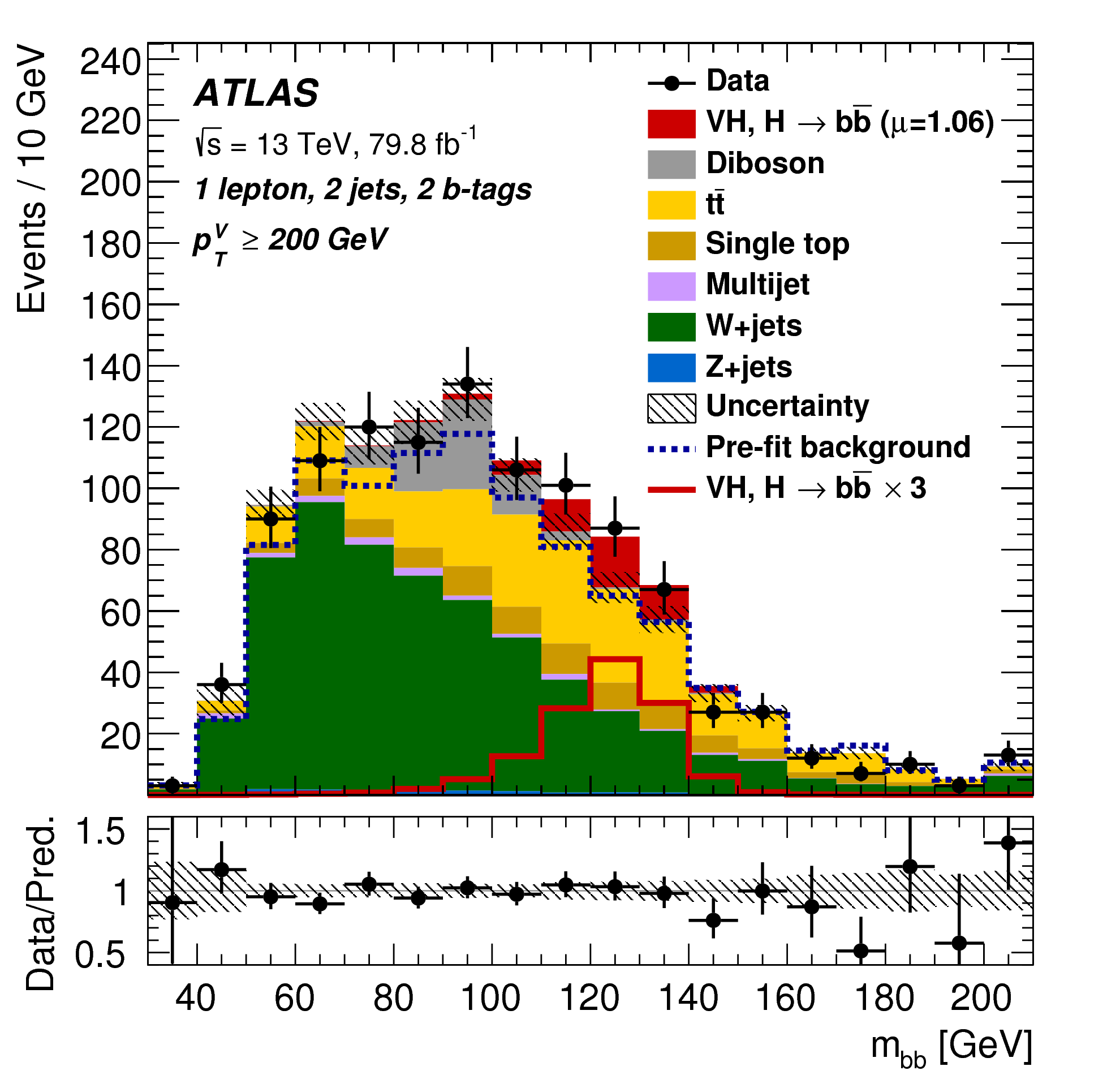ATLAS sets strong constraints on supersymmetric dark matter
One of the most complete theoretical frameworks that includes a dark matter candidate is supersymmetry. Dark matter is an unknown type of matter present in the universe, which could be of particle origin. Many supersymmetric models predict the existence of a new stable, invisible particle - the lightest supersymmetric particle (LSP) – which has the right properties to be a dark matter particle. The ATLAS Collaboration has recently reported two new results on searches for an LSP where it exploited the experiment’s full “Run 2” data sample taken at 13 TeV proton-proton collision energy. The analyses looked for the pair production of two heavy supersymmetric particles, each of which decays to observable Standard Model particles and an LSP in the detector.
Celebrating the recipients of the 2019 ATLAS PhD Grant
At an award ceremony in the Globe of Science and Innovation, the recipients of the 2019 ATLAS PhD Grant were celebrated in the presence of CERN & Society donors and members of the ATLAS community. The ATLAS PhD Grant has supported up-and-coming talents in particle physics since 2014 and this year saw a new donor take up its cause.
News |
Highlights from Moriond: ATLAS explores the full Run-2 dataset
This week, particle physicists from around the world gathered in La Thuile, Italy, for the annual Rencontres de Moriond conference on Electroweak Interactions and Unified Theories. It was one of the first major conferences to be held following the recent completion of the Large Hadron Collider’s (LHC) second operation period (Run 2). The ATLAS Collaboration unveiled a wide range of new results, including new analyses using the full Run-2 dataset, as well as some high-profile studies of Higgs, electroweak and heavy-ion physics.
News |
All together now: adding more pieces to the Higgs boson puzzle
The Higgs boson was discovered in 2012 by the ATLAS and CMS experiments, but its rich interaction properties (its coupling to other particles) have remained a puzzle. Thanks to an unprecedented amount of Higgs bosons produced at the LHC, all of the main Higgs boson production and decay modes have now been observed.
ATLAS measures Higgs boson coupling to top quark in diphoton channel with full Run-2 dataset
At the Rencontres de Moriond (La Thuile, Italy), the ATLAS Collaboration presented an updated measurement of ttH production in the diphoton channel. The result examines the full Run-2 dataset – 139 fb-1 collected between 2015 and 2018 – to observe ttH production in a single channel with a significance of 4.9 standard deviations.
ATLAS finds evidence of three massive vector boson production
Today, at the Rencontres de Moriond conference (La Thuile, Italy), the ATLAS collaboration released evidence for the simultaneous production of three W or Z bosons in proton–proton collisions at the Large Hadron Collider (LHC). The W and Z bosons are the mediator particles of the weak force – one of the four known fundamental forces – which is responsible for the phenomenon of radioactivity as well as an essential ingredient to our Sun's thermonuclear process.
ATLAS observes light scattering off light
Light-by-light scattering is a very rare phenomenon in which two photons – particles of light – interact, producing again a pair of photons. The ATLAS Collaboration has reported the observation of light-by-light scattering with a significance beyond 8 standard deviations.
Searching for Dark Matter with the ATLAS detector
When we look around us, at all the things we can touch and see – all of this is visible matter. And yet, this makes up less than 5% of the universe.
Feature |
First ATLAS result with full Run-2 dataset: a search for new heavy particles
Could a Grand Unified Theory resolve the remaining mysteries of the Standard Model? If verified, it would provide an elegant description of the unification of SM forces at very high energies, and might even explain the existence of dark matter and neutrino masses. ATLAS physicists are searching for evidence of new heavy particles predicted by such theories, including a neutral Z’ gauge boson.
ATLAS honours six new Thesis Award winners
On Valentine’s Day 2019, the ATLAS Collaboration took a break from the usual rhythm of scientific discussion to showcase some of its most junior members. In a celebration in CERN’s Main Auditorium, the collaboration held its 10th annual ATLAS Thesis Awards.
News |
Preparing ATLAS for the future
Long Shutdown 2 (LS2) of the Large Hadron Collider commenced last week, as the accelerator powered down and the entry to the ATLAS cavern opened wide. Over the next two years, teams from across the ATLAS Collaboration will be upgrading and consolidating their experiment. On the agenda: the refurbishments of key electronics, the maintenance of various detector components and – critically – the installation of new detectors.
News |
ATLAS completes data-taking for Run 2
Beams in the Large Hadron Collider came to a stop today, closing out four years of record-breaking operation for the ATLAS experiment. Run 2 saw the extraordinary exploration of the high-energy frontier, as the ATLAS experiment brought new understanding of particle physics.
News |
In conversation with Martine Bosman, a pioneer of ATLAS hadronic calorimetry
Martine Bosman is one of the pioneers behind the Tile Calorimeter. Over her long career with the Collaboration, she has held several key roles: from convenor of the Radiation Task Force and the Top Quark Group to Collaboration Board Chair.
Portrait |
Producing four top quarks at once to explore the unknown
For several decades, particle physicists having been trying to better understand Nature at the smallest distances by colliding particles at the highest energies. While the Standard Model of particle physics has successfully explained most of the results that have arisen from experiments, many phenomena remain baffling. Thus, new particles, forces or more general concepts must exist and – if the history of particle physics is any indication – they could well be revealed at the high-energy frontier.
ATLAS celebrates “dedicated and creative” collaboration members with Outstanding Achievement Awards
On 11 October 2018, during its semestrial collaboration meeting at CERN, ATLAS celebrated outstanding achievements of its collaboration members with an awards ceremony. Established in 2014, the Outstanding Achievement Awards give recognition to excellent contributions made to the collaboration in all areas, excluding physics analysis.
News |
New ATLAS result of ultra-rare B-meson decay to muon pair
The study of hadrons – particles that combine together quarks to form mesons or baryons – is a vital part of the ATLAS physics programme. Their analysis has not only perfected our understanding of the Standard Model, it has also provided excellent opportunities for discovery. On 20 September 2018, at the International Workshop on the CKM Unitarity Triangle (CKM 2018), ATLAS revealed the most stringent experimental constraint of the very rare decay of the B0 meson into two muons (μ).
ATLAS searches for double Higgs production
The Brout-Englert-Higgs (BEH) mechanism is at the core of the Standard Model, the theory that describes the fundamental constituents of matter and their interactions. It introduces a new field, the Higgs field, through which the weak bosons (W and Z) become massive while the photon remains massless. The excitation of this field is a physical particle, the Higgs boson, which was discovered by the ATLAS and CMS collaborations in 2012.
ATLAS observes elusive Higgs boson decay to a pair of bottom quarks
The ATLAS Collaboration at CERN’s Large Hadron Collider (LHC) has – at long last – observed the Higgs boson decaying into a pair of bottom (b) quarks. This elusive interaction is predicted to make up almost 60% of the Higgs boson decays and is thus primarily responsible for the Higgs natural width. Yet it took over six years after the 2012 discovery of the Higgs boson to accomplish this observation.
Stronger together: combining searches for new heavy resonances
While the Standard Model has proven tremendously successful, much experimental evidence points to it not being a complete description of our universe. The search for “new physics” is therefore an important component of the ATLAS experimental programme, where a number of analyses are looking for signs of new heavy particles decaying to different final states. Though these searches have not yet found a significant signal, they have allowed physicists to place stringent constraints on different new physics scenarios. These can be further tightened by combining different analysis channels and approaches.
ATLAS Around the World: the faces behind the physics
“Multiculturalism” isn’t just a buzzword for ATLAS, it’s a way of life. With members of over 90 different nationalities – spanning every populated continent – ATLAS is a cultural experiment as much as it is a scientific one. Our new ATLAS Around the World series invites you to meet people from every nationality represented in the collaboration, to gain an insight into the individual journeys that brought them to particle physics. All are from very different backgrounds, but share the common goal of understanding our universe.
News |
Could a new type of quark fix the “unnaturalness” of the Standard Model?
While the discovery of the Higgs boson at the Large Hadron Collider (LHC) in 2012 confirmed many Standard Model predictions, it has raised as many questions as it has answered. For example, interactions at the quantum level between the Higgs boson and the top quark ought to lead to a huge Higgs boson mass, possibly as large as the Planck mass (>1018 GeV). So why is it only 125 GeV? Is there a mechanism at play to cancel these large quantum corrections caused by the top quark (t)? Finding a way to explain the lightness of the Higgs boson is one of the top (no pun intended) questions in particle physics.
Boosting high-energy physics education around the world with ATLAS Open Data
Since the beginning of ATLAS, collaboration members have devoted hours, days, weeks and months teaching High Energy Physics (HEP) to anyone willing to listen. But sometimes those willing to listen do not have the means, especially when oceans and continents separate them from our experiment in Geneva. How can we overcome these geographical distances to allow anyone interested in HEP to learn?
Blog |
ATLAS reveals key results at ICHEP 2018
Feynman. Salam. Weinberg. For the past 50 years, the International Conference on HighEnergy Physics (ICHEP) has been the meeting place of giants in the field. Now, a new type of giant dominates: the thousands-strong collaborations of Large Hadron Collider (LHC) physicists.
News |
International conferences: interesting physics & instant excitement
What a start it's been to my first conference! I was lucky enough to join the 39th International Conference on High Energy Physics (ICHEP), the biggest conference in High Energy Physics. About 1000 physicists are currently gathered in Seoul, presenting results from all across the field. Getting to visit South Korea plus hearing about cutting-edge physics sounded like a 5-star recipe to me!
Blog |
Higgs boson observed decaying to b quarks – at last!
Today, at the 2018 International Conference on High Energy Physics in Seoul, the ATLAS experiment reported a preliminary result establishing the observation of the Higgs boson decaying into pairs of b quarks, furthermore at a rate consistent with the Standard Model prediction.

